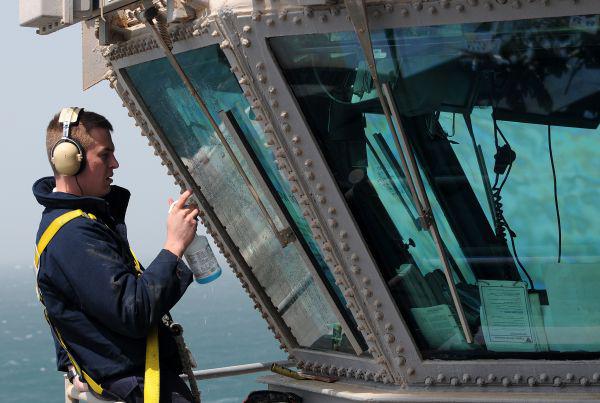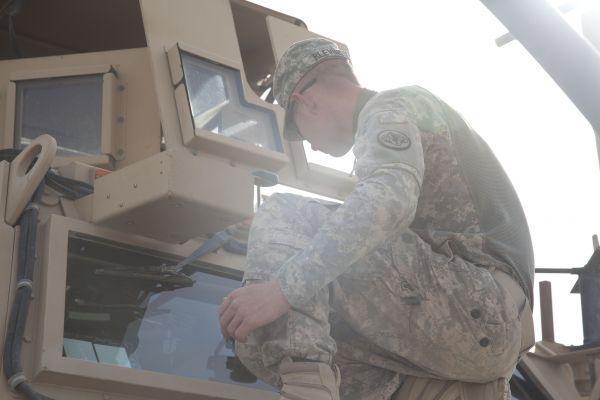Navy Scientists Create Harder Ceramic for Armor Windows
Scientists with the U.S. Naval Research Lab are the first to succeed at creating a ceramic window for all types of military vehicles that is not only 50 percent harder than current materials, but lighter, more crack resistant and likely to be a cost-saving endeavor, researchers say.
Scientists with the U.S. Naval Research Lab (NRL) are the first to succeed at creating a ceramic window for all types of military vehicles that is not only 50 percent harder than current materials, but lighter, more crack resistant and likely to be a cost-saving endeavor, researchers say.
“We are the first to demonstrate a ceramic material with that small of a grain size and measure its properties,” says James Wollmershauser, a scientist with the NRL’s materials science and technology division, of the development of the Enhanced High Pressure Sintering approach.
Scientists compacted a powder of grains measuring 28 nanometers—about 4,000 times thinner than a human hair—and by applying 1 million pounds of pressure per square inch (PSI), 500 times higher than the standard 2,000 PSI, at temperatures of about 800 degrees Celsius, created the hard, see-through ceramic, explains Jas Sanghera, of the NRL’s optical sciences division. “It becomes extremely hard when you go down to this small grain size,” he says. The ceramic can withstand the impact of a raindrop traveling 600 mph, and sand erosion up to 460 mph, without suffering surface abrasions or damage, Sanghera says. “Glass will not survive those conditions.” Better yet, the researchers say, the ceramic window provides the same clarity of view as looking through traditional glass. “It’s like looking through your car window,” says Boris Feygelson, of the NRL’s electronics science and technology division.
“It’s tougher, stronger and harder than glass, and wherever you have glass, the idea is that you could replace glass with this tougher material,” Sanghera says. “Because it would be a stronger material, it would also be thinner. Now … there would be less weight associated with this and it impacts mobility.” The harder spinel could offer better armor windows in military vehicles and better protection for personnel and equipment. Beyond windows, the nanocrystalline ceramics could also be used for protective eyewear, he adds.
Since it’s thinner and lighter, less material needs to be used and could prove less expensive both in terms of material used and funding for fuel consumption, for example.
The Navy program supporting the project has been going on for two-and-a-half years, and in their work, the NRL researchers showed that the fracture resistance does not change, suggesting nanocrystalline ceramics can have an equivalent toughness to microcrystalline ceramics, which is important for high window lifetimes. “You don’t want cracks moving through a material,” Wollmershauser says. “You can get a crack moving all the way through and it’s going to fail catastrophically. Your window is going to break.” Initial tests show that the nanocrystalline spinel passes the standard military use tests in ambient temperatures of 55 degrees below zero to 95 degrees Fahrenheit. More research is needed on the product that “is not ready for prime time yet,” Sanghera says. Another benefit is that the product is highly transparent, making it useful in ultraviolet, visible and infrared optics.





Comments